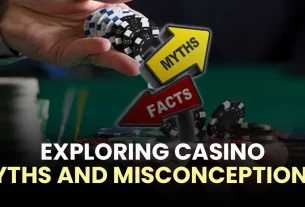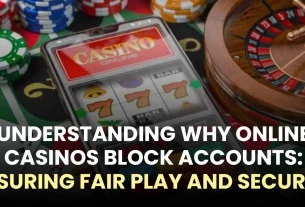Most people think of rummy as a numbers game—arranging sets, tracking discards, and calculating probabilities. But hidden beneath the math is psychology, and one of its most fascinating elements is bluffing.
Bluffing is often associated with poker, but in rummy, it plays a quieter yet equally powerful role. Done well, bluffing makes opponents misread your strategy, miscalculate their risks, and even discard cards that help you win. Done poorly, it can backfire and hand over the game.
This article explores the psychology of bluffing in rummy—when to use it, how to use it, and why it’s a skill worth mastering.
What Bluffing Means in Rummy
Bluffing doesn’t mean lying outright—it means creating illusions about your hand through discards, pick-ups, and timing.
Examples include:
- Discarding a card you actually need to mislead opponents.
- Picking up cards to make it seem like you’re building one sequence, while chasing another.
- Holding onto a winning hand longer to lure opponents into riskier plays.
Bluffing works because rummy players are always watching each other’s moves. By manipulating what they think they see, you gain a hidden edge.
The Psychology Behind Rummy Bluffing
Bluffing taps into the way opponents process information. In casino table games like rummy, most players rely on patterns—they assume what you pick or discard signals your true intentions.
When you break these patterns intentionally, you create doubt. Doubt forces opponents to hesitate, make suboptimal choices, or waste time chasing sequences that don’t exist.
At Khelraja online casino, this psychological play is especially valuable in competitive matches, where one wrong discard can cost a bankroll.
When Bluffing Works Best in Rummy
Timing is everything. Bluffing in rummy is most effective:
- Mid-game: When opponents are still forming hands and tracking patterns.
- When you’re close to winning: Misleading discards can delay their progress while you finish your own hand.
- Against observant players: Bluffing is wasted on opponents who aren’t tracking you. It shines against those who analyse carefully.
Avoid bluffing in the early game, when card movements are too random, or in the late game, where players may already be close to declaring.
5 Common Bluffing Tactics in Rummy
Here are five proven bluffing techniques to practice:
- The False Discard
Discard a card you actually want early, then pick up a similar one later. Opponents may assume you’re avoiding that suit. - The Misdirection Pickup
Pick a card from the open deck to signal interest in one sequence, while secretly focusing on another. - The Hold-and-Delay
Sit on a nearly complete hand for extra turns. Opponents may think you’re struggling and discard carelessly. - The Joker Bluff
Pretend you don’t have jokers by chasing alternative sequences. At the last moment, drop your joker-fueled combination. - The Pressure Play
Speed up your moves to make opponents feel rushed. Under pressure, they’re more likely to make mistakes.
Each of these tactics relies on psychology more than cards—turning the opponent’s assumptions against them.
Risks of Bluffing in Rummy
Bluffing is powerful, but it’s not foolproof. Overusing it can expose your strategy. Risks include:
- Sharp opponents are catching on and reversing the bluff against you.
- Discarding valuable cards that opponents quickly use.
- Overconfidence, where bluffing replaces solid fundamentals.
In online card games, where players often move quickly, bluffs are riskier because you have less time to shape perceptions. Bluff sparingly and only when the situation calls for it.
How to Defend Against Opponent Bluffs
If you want to bluff in rummy, you must also learn to spot when it’s being used against you. Signs of bluffing include:
- Inconsistent playstyles—an opponent suddenly discarding valuable mid-sequence cards.
- Picking cards that don’t logically fit the hand they’ve been building.
- Sudden changes in pace or aggression.
Defensive strategies:
- Rely on probability, not emotion.
- Focus on your own hand first.
- Don’t chase every clue—some are planted.
The key is balance: respect the possibility of a bluff, but don’t let paranoia override your game.
Bluffing in Online vs. Live Rummy
Bluffing plays out differently depending on the format:
- Live table games: Body language, timing, and hesitation add layers to bluffs. Pausing before discarding, for instance, can send misleading signals.
- Online gambling games: Bluffing is limited to discards and pick-ups, but speed of play becomes the psychological tool. Fast moves can suggest confidence, while slow moves may imply indecision.
Either way, bluffing remains a subtle but effective strategy when paired with strong fundamentals.
Why Bluffing Matters for Serious Rummy Players
So why invest in bluffing? Because it adds a psychological dimension that elevates your game. Skilful bluffing can:
- Delay opponents long enough for you to complete your hand.
- Force mistakes that hand you easy wins.
- Make you unpredictable, which is invaluable in Khelraja online casino tournaments or casual play with experienced friends.
Bluffing won’t replace strategy, but it complements it—like seasoning on a dish, it brings out the best when used carefully.
Final Thoughts
The psychology of bluffing in rummy is about control—not of the cards, but of your opponents’ perceptions. Knowing when and how to bluff can turn an average hand into a winning one, and a losing streak into a psychological victory.
But remember: bluffing is a tool, not a crutch. It works best when paired with strong fundamentals like probability, discard tracking, and bankroll discipline. Use it wisely, sparingly, and strategically.
The next time you sit at a live table game at Khelraja online casino, ask yourself: what story are my cards telling my opponents—and is it the story I want them to believe?






